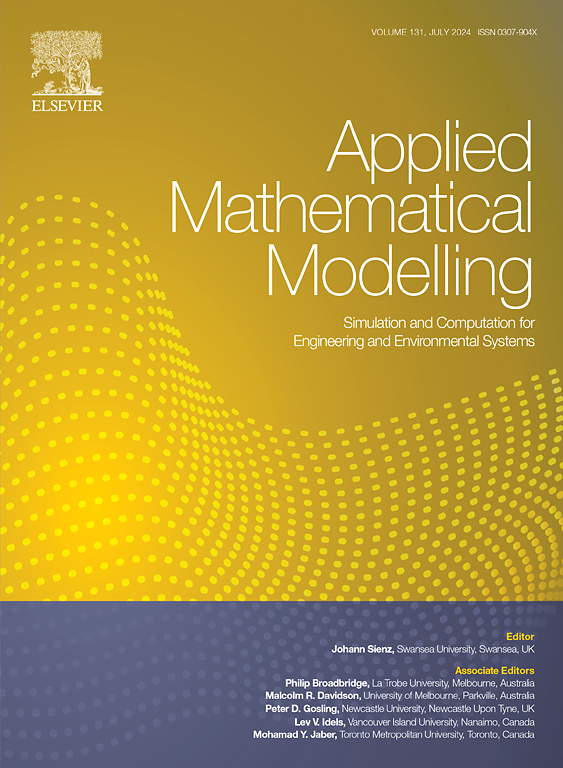一种具有组合弯曲切口的混合pso启发式野火灾害最大疏散规划算法
IF 4.4
2区 工程技术
Q1 ENGINEERING, MULTIDISCIPLINARY
引用次数: 0
摘要
洪水和火灾等自然灾害每年都会影响世界各个地区。灾害管理和规划的最关键方面之一是促进人员撤离。因此,本研究开发了一个紧急疏散的数学模型,考虑到将个人转移到避难所的约束和限制。该模型被称为最大公交疏散规划,考虑了包括道路阻塞、车辆燃料和乘客容量在内的约束条件。针对该问题的非确定性多项式时间难复杂度,采用粒子群优化算法和启发式算法相结合的混合粒子群优化-启发式算法求解该非线性模型。此外,我们将模型线性化,并在三个版本中使用开发的组合弯管机切割方法进行求解。在各种情况下进行了数值计算,结果表明,混合粒子群优化-启发式算法的输出在较短的时间内得到了合适的解。此外,利用组合弯管机切割求解线性化模型的结果表明,在大多数情况下,第二种版本的执行时间优于其他版本。本文章由计算机程序翻译,如有差异,请以英文原文为准。
A novel Hybrid PSO-Heuristic Algorithm with Combinatorial Benders' Cuts for maximal evacuation planning in wildfire disasters
Natural disasters, such as floods and fires, affect various regions of the world every year. One of the most critical aspects of disaster management and planning is facilitating the evacuation of people. Therefore, this study develops a mathematical model for emergency evacuation, taking into account the constraints and limitations of transferring individuals to shelters. The model, called the maximal bus evacuation planning, considers constraints including road blockages, vehicle fuel, and passenger capacities. Given the Nondeterministic Polynomial-time hard complexity of this problem, a Hybrid Particle Swarm Optimization–Heuristic Algorithm, which combines the Particle Swarm Optimization Algorithm with a Heuristic Algorithm, is used to solve the nonlinear model. Furthermore, we linearize the model and solve it using the developed Combinatorial Benders' Cuts approach in three versions. Numerical computations are examined under various scenarios, and the outputs of the Hybrid Particle Swarm Optimization – Heuristic algorithm reach suitable solutions within a short timeframe. Additionally, the results from solving the linearized model using the Combinatorial Benders' Cuts show that, in most cases, the execution time of the second version is better than the other versions.
求助全文
通过发布文献求助,成功后即可免费获取论文全文。
去求助
来源期刊

Applied Mathematical Modelling
数学-工程:综合
CiteScore
9.80
自引率
8.00%
发文量
508
审稿时长
43 days
期刊介绍:
Applied Mathematical Modelling focuses on research related to the mathematical modelling of engineering and environmental processes, manufacturing, and industrial systems. A significant emerging area of research activity involves multiphysics processes, and contributions in this area are particularly encouraged.
This influential publication covers a wide spectrum of subjects including heat transfer, fluid mechanics, CFD, and transport phenomena; solid mechanics and mechanics of metals; electromagnets and MHD; reliability modelling and system optimization; finite volume, finite element, and boundary element procedures; modelling of inventory, industrial, manufacturing and logistics systems for viable decision making; civil engineering systems and structures; mineral and energy resources; relevant software engineering issues associated with CAD and CAE; and materials and metallurgical engineering.
Applied Mathematical Modelling is primarily interested in papers developing increased insights into real-world problems through novel mathematical modelling, novel applications or a combination of these. Papers employing existing numerical techniques must demonstrate sufficient novelty in the solution of practical problems. Papers on fuzzy logic in decision-making or purely financial mathematics are normally not considered. Research on fractional differential equations, bifurcation, and numerical methods needs to include practical examples. Population dynamics must solve realistic scenarios. Papers in the area of logistics and business modelling should demonstrate meaningful managerial insight. Submissions with no real-world application will not be considered.
 求助内容:
求助内容: 应助结果提醒方式:
应助结果提醒方式:


